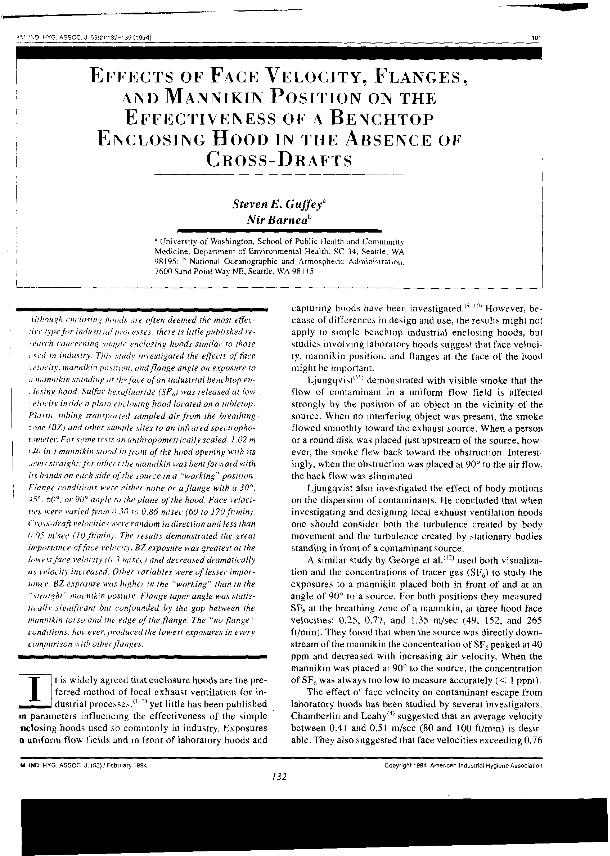Effects of face velocity, flanges, and mannikin position on the effectiveness of a benchtop enclosing hood in the absence of cross-drafts

Contenido multimedia no disponible por derechos de autor o por acceso restringido. Contacte con la institución para más información.
| Tag | 1 | 2 | Valor |
|---|---|---|---|
| LDR | 00000nab a2200000 i 4500 | ||
| 001 | MAP20071020864 | ||
| 003 | MAP | ||
| 005 | 20080418120400.0 | ||
| 007 | hzruuu---uuuu | ||
| 008 | 940906e19940201usa|||| | |00010|eng d | ||
| 035 | $a6800013474 | ||
| 040 | $aMAP$bspa | ||
| 084 | $a872 | ||
| 100 | 1 | $0MAPA20080283841$aGuffey, Steven Eugene | |
| 245 | 1 | 0 | $aEffects of face velocity, flanges, and mannikin position on the effectiveness of a benchtop enclosing hood in the absence of cross-drafts$cSteven E. Guffey, Nir Barnea |
| 520 | $aAlthough enclosing hoods are often deemed the most effective type for industrial processes, there is little published research concerning simple enclosing hoods similar to those used in industry. This study investigated the effects of face velocity, mannikin position, and flange angle on exposure to a mannikin standing at the face of an industrial benchtop enclosing hood. Sulfur hexafluoride was released at low velocity inside a plain enclosing hood located on a tabletop | ||
| 650 | 1 | 1 | $0MAPA20080585679$aHigiene industrial |
| 650 | 1 | 1 | $0MAPA20080603137$aProcesos industriales |
| 650 | 1 | 1 | $0MAPA20080616441$aContaminación atmosférica |
| 650 | 1 | 1 | $0MAPA20080551797$aMuestreos |
| 650 | 1 | 1 | $0MAPA20080605278$aContaminantes químicos |
| 650 | 1 | 1 | $0MAPA20080615833$aVelocidad de propagación |
| 650 | 1 | 1 | $0MAPA20080588946$aAmbiente de trabajo |
| 650 | 1 | 1 | $0MAPA20080612597$aSistemas de ventilación |
| 700 | 1 | $0MAPA20080020026$aBarnea, Nir | |
| 740 | 0 | $aAmerican Industrial Hygiene Association journal | |
| 773 | 0 | $tAmerican Industrial Hygiene Association journal$dFairfax, Virginia$gVol. 55, nº 2, February 1994 ; p. 132-139 |

